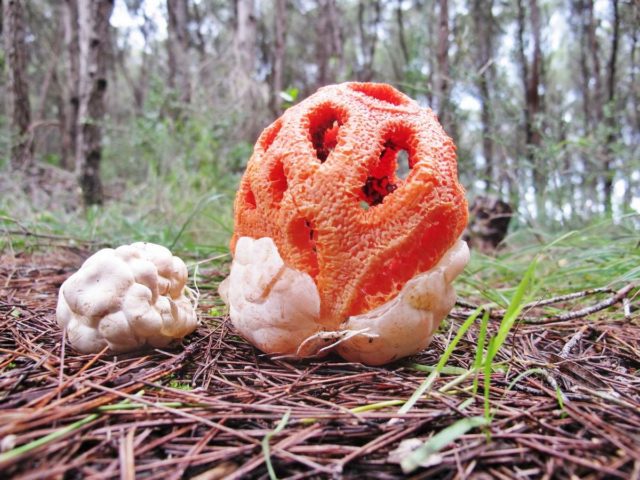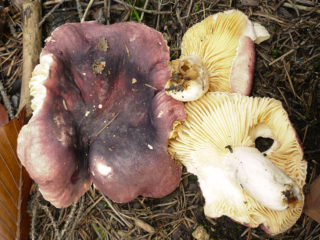Content
The columnar lattice has become a very unusual and beautiful specimen, which is quite rare. Belongs to the Vaselkov family. It is generally accepted that this species was introduced to North America, since it is there that it is most often found in landscape areas and other places where exotic plants are planted.
Where do columnar trellises grow?
Most often, the columnar trellis is found in North and South America, China, New Zealand, Australia, Hawaii, New Guinea and Oceania.Because this species feeds on dead and decaying organic matter, it grows in habitats where there is a large accumulation of wood chips, mulch and other cellulose-rich substances. Columnar lattice can be found in parks, gardens, clearings and around them.
What do columnar grilles look like?
When unripe, the fruiting body is ovoid in shape, which is partially immersed in the substrate. With a vertical incision, one can notice a thin peridium, compacted towards the base, and behind it is a gelatinous layer, the approximate thickness of which is about 8 mm.
When the egg shell ruptures, a fruiting body appears in the form of several connecting arches. As a rule, there are from 2 to 6 blades. On the inside they are covered with spore-containing mucus, which emits a specific odor that attracts flies. It is these insects that are the main distributors of spores of this type of fungus, as well as the entire Veselkov genus. The fruit body ranges from yellow or pink to orange-reddish in color. The pulp itself is tender and spongy. As a rule, the fruit body takes on a brighter shade on top, and a pale color underneath. The height of the blades can reach up to 15 cm, and the thickness is about 2 cm.
The spores are cylindrical in shape with rounded ends, 3.5-5 x 2-2.5 microns. The columnar trellis does not have legs or any other base for the arches; it grows exclusively from a burst egg, which remains below. In cross-section, each arc is an ellipse with a longitudinal groove located on the outer side.
Is it possible to eat columnar trellises?
Despite the fact that there is not much information about the columnar trellis, all sources claim that this mushroom is marked as inedible. Cases of use of this instance have also not been recorded.
How to distinguish columnar grilles
The most similar option is the Javan flowertail. It has 3-4 lobes growing from a common stem, which can be short and therefore barely noticeable.
The shell of the flowertail, the so-called spathe, has a grayish or grayish-brown tint. You can distinguish the columnar trellis from this specimen in the following way: cut the shell of the fruiting body and remove the contents. If there is a small stem, it means it is a double, since the columnar trellis has arches that are not connected to each other.
Another representative of the Vaselkov genus is the red trellis, which has similarities with the columnar specimen. However, there are still differences. Firstly, the double has a more rounded shape and a rich orange or red color, and secondly, it is the only representative of the lattice family that is found in Russia, especially in the southern part. In addition, it is one of the poisonous mushrooms.
As for the columnar latticewort, this object has not yet been recorded on Russian territory.
Conclusion
Undoubtedly, the columnar trellis may interest any mushroom picker with its unusual appearance. However, it is not so easy to meet it, since this specimen is rare.












